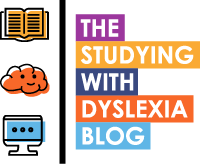By Barbie Shipley.
Barbie Shipley is a full
time marketing executive and all-the-time wife and mother of a ten-year-old
dyslexic boy who lives in Knoxville, TN. When she’s not working, you can find
Barbie running, cooking, sewing, taxing her son to golf lessons or karate and
skiing with her family but mostly helping with homework. She considers herself
an expert in the creation of mnemonic devices — a key component to helping her
son prepare for tests!
In the article below Barbie writes about how the early diagnosis of dyslexia in her son lead to the development of comprehensive support throughout school.
 |
| Barbie Shipley |
It started when my extremely bright 4-year-old
son, Griffen, wasn’t learning colors or his ABC’s. He could get you the colored
block that you asked for and point to the color you told him, but he couldn’t
tell you what color was even after you just said it. He could tell you exactly how to draw any letter
-- just as his teacher taught him, but he couldn’t tell you what letter he just
drew. He was our first and only child,
we didn’t know what to expect, we thought he was just playing coy.
It wasn’t long after that the director of
his pre-school suggested there might be an issue. Fourteen hours of testing
later, the psychologist told us that our Griffen tested “off the charts” in his IQ, but had severe
dyslexia, significant ADHD and short to long-term memory issues.
I had no idea of how to apply this
information or what it meant, he wasn’t even in kindergarten yet! At the time I
didn’t even know my son was getting an early diagnosis, But I thought that this
would set us on a definitive path, and it didn't, because there isn’t one.
The thing I realize now, this early
diagnosis, while it didn’t provide a path or game plan, did gave us time to ask
questions, to interview schools, determine programs, try various interventions,
get an idea of what he responded to, what he didn't. It allowed us the time to
interview schools, see what kind of assistance would be available, make
decisions based on what we learned, we built a relationship with the school, so
that now five years into it, having conferences and meetings about his IEP
isn’t scary, it is productive.
They say that up to the third grade, kids
learn to read, now that he is in fourth grade, everything has switched, he’s
reading to learn and the challenges are very real – but I think we’re prepared
for them. I can’t imagine what we would be going through if we were just now
learning about the dyslexia now. Griffen
is the earliest diagnosed dyslexic at his school; we went into kindergarten
with an IEP in place that we’ve adapted every year.
Early diagnosis also allowed us to prepare Griffen,
help him understand his dyslexia. He isn’t afraid to tell people, including the
kids in his classes, about it. He is used to the interventions, he’s had tutors
twice a week since he was four. He knows he has to put in extra effort and we
discuss our strategies for success as a family. Griffen is the first person to
remind a teacher of his accommodations and is learning how to navigate the
tools that help him such as Learning Ally.
Ultimately, I think early diagnosis helped
lay the foundation of confidence in Griffen. He understands why he struggles
and is willing to work through problems. He knows he has support and isn’t
alone. Perhaps he wears his dyslexia as a badge, he likes that he thinks
differently, and frankly so do I.
